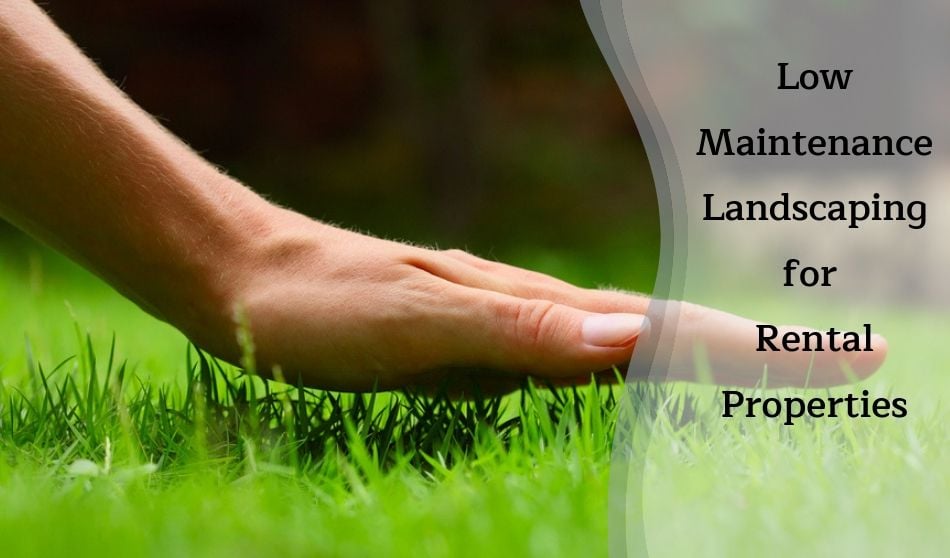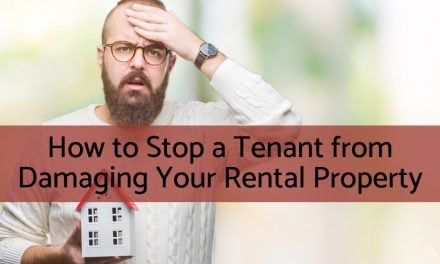
Whether you tackle it yourself, hire a landscaping or yard maintenance company, or the rental lease agreement has your tenants caring for the yard, low maintenance landscaping should be a priority. From good outdoor lighting to specialty gardens to low maintenance plants, the features outside the home are as important as the amenities within.
Low Maintenance Landscaping Ideas
Hardscaping to Replace Grass
One great idea for low maintenance landscaping is to use hardscaping features. Hardscaping is removing plants and replacing with a hard surface such as patios, sitting areas, walkways, or borders. The point of hardscaping is to have less surface area of living plants which translates to less or low maintenance landscaping.
A patio is a great solution to replacing a large section of the yard but you might also consider creating a walking path to a small sitting area. Place a bench atop a hardscape surface in a corner of either the front or back yard to create a little oasis. In the front, it adds to the curb appeal. In the back, this sitting area makes the yard feel homey and inviting.
Bordering areas around plants with brink or stone provide a barrier to keep dirt or mulch in place. Close to the house, bordered areas make it just a little harder for criminals to get window access.
Less grass is less work but remember your hardscaping features will need a simple cleaning and perhaps weeding periodically.
Barrier Cloth for Weed Control
No one, especially tenants, wants to pull weeds. Lay down a protective weed barrier whether using weed fabric or biodegradable material to help keep the weeds at bay. Mulch also aids in weed control for low maintenance landscaping, so consider using them together.
Organic barrier cloth is biodegradable and will likely need replacing often. It is recommended to use when planting annuals. It is good for the environment but not necessarily low maintenance depending on the type and how long it takes to break down.
Straw is sometimes used as a barrier and sometimes a mulch. It can be a good option for pest control but as it is not overly attractive, you may consider using it as the first layer on top of the barrier you’ve chosen, before laying down other mulch.
Mulch Benefits and Options
Not only does mulch add to the curb appeal of the home and help with weed control but adding mulch around plants prevents soil erosion and helps with retaining moisture which in turn reduces fertilizer and water use.
The two types of barrier and mulch are organic and inorganic; both with pros and cons to consider.
Organic
Organic mulch such as cedar and cypress are great at repelling insects. However, although less expensive to purchase, wood chips will attract many unwanted visitors such as carpenter ants, roaches, earwigs, and termites.
Some organic mulch such as cocoa bean shells can be harmful to pets and small children so those should be avoided, especially for a rental property. Do your research before laying mulch to see which are toxic (see resources below).
Inorganic
Inorganic mulch such as rubber is good for water conservation. Unlike organic mulch that absorbs water which evaporates, inorganic mulch allows for water to run off into the plant.
Mulch that is made with inorganic material will not break down as organic material does and so will not need to be replaced. It might be a little more expensive to purchase at the onset but that cost over time pays for itself.
Choosing an inorganic material is one easy way to help the environment as these are often created with recycled material. However, if the property is in a hot climate it might be best to use inorganic as rubber absorbs thermal energy and might burn plants.
Drip Irrigation
Preferred over sprinklers, drip irrigation takes the water directly where it is needed. Water isn’t likely to evaporate or runoff as easily with a drip irrigation system. Adding a timer to the system is another simple way to keep a low maintenance landscape.
Xeriscaping
Xeriscaping is a term to describe the landscaping design and plant choice designed to conserve water by grouping plants together with similar watering needs.
Not to be confused with zero-scape (which is no-water, highly difficult to achieve, and not that attractive) xeriscaping can offer a visually rich and vibrant selection of plants to compliment your landscaping design.
Low Maintenance Landscaping Plants
If the tenant is not responsible for mowing and you don’t want to cut the grass or hire a yard maintenance crew, consider replacing the grass with these low maintenance plants. Mixed with hardscaping ideas your tenants will have a beautiful garden-like setting and you will have the best rental property on the block.
Xeric and Native Plants
The water conservation philosophy of xeriscaping uses xeric plants. Xeric plants are drought-resistant plants that cope well in low moisture environments.
Another low maintenance landscaping tactic is to use native plants when possible. Native plants can be low maintenance plants because they are suited best for survival in your local soil and climate. This hardiness will help cut down on plant death and replacement.
Whether native and/or xeric, using low maintenance landscaping plants can help save time and money in keeping your rental looking sharp.
Perennials
Using perennials around your rental is a great return on your investment of time and money as they come alive year after year. Many perennials can withstand summer heat, a draught, or even a heat wave. Consider the lovely curb appeal when those lovely daffodils and tulips bloom.
Ornamental and Evergreen Trees
Evergreen trees and bushes such as a gold thread cypress and myrtles provide shade, are easy to maintain and are drought-tolerant.
Dwarf shrubs
Dwarf shrubs require little to no pruning and are easy plants to grow. Placed under windows can vex would-be invaders while providing variety to your garden.
Ornamental Grasses
Next up on the low maintenance plants list are ornamental grasses. Ornamental grass can be visually stunning but will need pruning back at least once a year.
Ground Cover and Moss
Ground cover and moss are great alternatives to grass. For example, clover as a ground cover is a low maintenance landscaping option as it doesn’t have to be mowed often. Moss can handle moderate foot traffic, is an evergreen, and can look great all year.
Be careful of decorative grasses, ground cover, and other plants as they might be invasive species. It’s important to research which plants are suitable before planting (see resource section below).
Even if you decide to keep the grass, adding some of these other elements to your rental property should help keep down landscaping costs and increase the property curb appeal.
Low Maintenance Landscaping Resources
National Gardening Association (NGA)
The National Garden Association website provides a research database of plants, plant care guides, and planting and gardening calendars. https://garden.org/
Mulch and Soil Council (MSC)
The Mulch and Soil Council provide consumers a mulch selection guide, information on termites, and consumer information. http://mulchandsoilcouncil.org/education.php
US Department of Agriculture
This website from the Department of Agriculture provides a list and information for invasive, noxious, prohibited, or otherwise harmful or potentially harmful vegetation by State and Region. https://www.invasivespeciesinfo.gov/subject/lists
National Association of Landscape Professionals (NALP)
The NALP offers this website for consumers to get expert advice, spark ideas, and find a professional. https://www.loveyourlandscape.org/idea-center/




